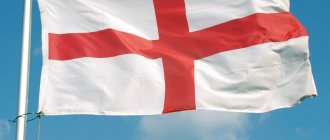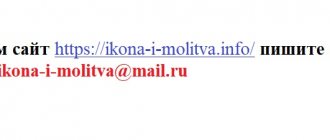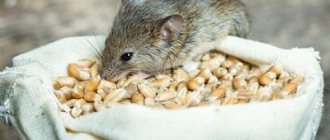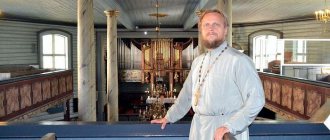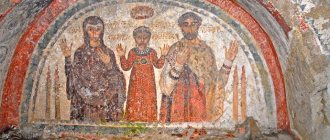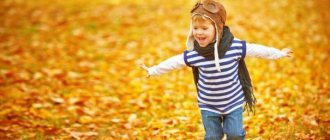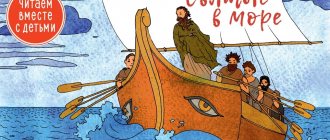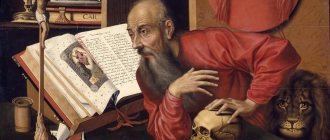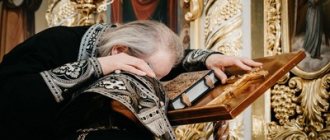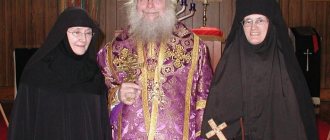Hunting has always played an important role in people's lives. Currently, it is mostly of a sporting nature or is intended to control populations of certain animal species. Like masters of any other craft, hunters have their own heavenly protector. In Orthodoxy, hunters and fishermen turn in prayer to the holy martyr Tryphon, the date of veneration of whose memory falls on February 1. He was born in Phrygia into a Christian family. From early childhood, his parents instilled in the boy a love for the Lord and the virtues mentioned in the Gospel. Thanks to his faith and piety, while still a child, he received God's grace - the ability to heal animals and people from various ailments.
What is Saint Tryphon famous for?
For the first time, local residents started talking about the saint after he managed to save his native village from famine. Then the fields of Phrygia were attacked by harmful insects that destroyed the wheat. It was enough for Tryphon to read the prayer, and the pests disappeared.
A more famous miracle associated with Saint Tryphon is the healing of the daughter of the Roman Emperor Gordian, whose body was possessed by an evil demon or spirit. The ruler turned to many healers and physicians, but no one could help the imperial daughter. After this, something strange happened; the girl shouted in a strange voice that only Tryphon could expel her. It was the demon speaking within her. Gordian immediately sent people to search for a man with that name. He was found in a pasture and brought to Rome.
The young man said words of prayer and forced the demon to leave the body of the imperial daughter. The unimaginable demon appeared before people in the form of a black dog, who admitted that he was an instrument of Satan. The evil spirit said that he and his minions were not capable of taking Christians under their power. The grateful emperor rewarded the saint with various benefits and money, which Tryphon immediately distributed to the poor on the street.
Patron saints of hunters and fishermen
Hunting is one of the oldest human activities that played an important role in its evolution. We should not consider it only in the light of sports and recreational activities or the wise use of renewable natural resources. It has a centuries-old history and preserves national traditions. This is a whole layer of our culture. Hunting scenes are depicted in rock paintings, on the horns of ungulates and mammoth tusks, in medallion and fine art, literature, legends and myths. The latter also includes the lives of saints - patrons of hunters.
If for sailors, fishermen and travelers it is Saint Nicholas the Wonderworker, then for hunters it is the Great Martyr Tryphon and Saint Hubert.
In Orthodoxy, the holy great martyr Tryphon is considered the heavenly patron of hunters, who is depicted sitting on a white horse with a falcon in his right hand. Hunting with birds of prey, which arose in ancient times, first in the East, later became widespread in Rus' and in Western Europe. Before the widespread use of complete hunting dogs, it still played a significant role in the life of society. However, later, hunting with greyhounds began to actively replace hunting with birds of prey, which remained only the privilege of the highest court aristocracy.
According to legend, the Holy Great Martyr Tryphon was born in 232 into a peasant family and in his youth he diligently helped his parents with housework. While still a youth, Tryphon showed the gift of miracles: he healed and alleviated the ailments of people, with his speeches he converted them to the Christian faith, for which he was captured and put on trial. He was subjected to scourging and many cruel tortures, but he refused to renounce Christ and recognize the Roman gods. For this he was sentenced to beheading. Before his execution, Tryphon fervently prayed and asked the Lord to accept him into his kingdom. Heeding the prayer, the Lord took his soul, even before the sentence could be carried out. The Memorial Day of Saint Tryphon in the Orthodox Church is celebrated on February 14th.
Despite the widespread use of hound and gun hunting in the 19th century, hunting with birds of prey in Russia still continued to exist, especially in the south of the country, where game birds, hares and foxes were hunted with them. Among lovers of such entertainment, large falcons, or gyrfalcons, were highly valued. To find a bird of prey that has flown away after prey, a pair of light and ringing bells are attached to its tail feathers, and before the hunt, a hooded cap with a plume attached to the top is put on its head. The purpose of the hood is to close the pet's eyes so that it calms down faster, does not run wild and does not rush after prey ahead of time. At the right moment, the falconer, pulling the plume, throws off the hood and sets the bird of prey after the game.
If in Orthodoxy the Great Martyr Tryphon is considered the patron saint of hunters, then in many countries of Western Europe hunters and foresters celebrate the feast of St. Hubert. These days, on the lapels of their outerwear and on their hats you can see an emblem in the form of a deer's head with a cross and a glow between the antlers. This image is called St. Hubert's stag, bringing good luck in the hunt. People of the Catholic faith who love hunting consider St. Hubert their patron. It is especially popular in Poland, Belgium, Switzerland, the Netherlands and France.
This can be confirmed by many emblems of hunting societies, made in the form of signs, medals and commemorative tokens with the image of a deer’s head, between the horns of which there is a holy cross. The amazing beauty and grace of the objects in question from earlier times is a kind of miracle of medal art, made with great artistic taste, often on silver and using various enamels and technologies.
According to one legend, Francis Hubert (lat. Hubertus) was born in 656. As a youth he lived at the court of the Frankish king, and later ended up in one of the kingdoms in northern France. Hubert was a fanatical hunter and spent all his free time in the forests with hounds, which worked well on large animals. One morning, when he was chasing a large deer, he suddenly turned around, and the amazed hunter saw the holy cross between the antlers, and then heard the voice of God, which called him to leave worldly life and serve the Lord to atone for his sins before nature.
This meeting radically changed the hunter’s fate, and after much deliberation he decided to become a monk and subsequently became a bishop, who preached in the Ardennes and then in Liege. Despite his rank, Hubert of Liege continued to be interested in hunting and breeding wild hunting dogs. He carried his love for them throughout his life and in all images he always stands next to hounds. After the death of Bishop Hubert in 727, the church canonized him, and he became the heavenly patron of hunting, the protector of all hunters and animals. In many European hunting clubs, on November 3, the Feast of St. Hubert is held in his honor, which, according to legend, protects dogs, hunting horses and birds of prey from disease.
In 825, the relics of Saint Hubert were transferred by the French king Louis to a monastery in the Ardennes forest. The monks living here have always been fond of hunting and were actively involved in breeding hunting dogs with good scent and amazing viscosity of work. They were very popular among European hunters and were called the dogs of St. Hubert. Currently, most dog breeders believe that the purebred St. Hubert hound has not survived, and in England dogs closely related to it are bred - bloodhounds, which work well on the blood trail.
In conclusion, it should be said that myths and legends about the patron saints of hunters as part of the cultural heritage of the peoples of Europe are still alive today. Legends about the Great Martyr Tryphon, Saint Hubert, as well as their help to hunters and game animals still exist. It is believed that the depiction of the heroes of these myths on the emblems of hunting societies, breastplates and dog tags brings good luck, not only to hunters, but also to their assistants (dogs, riding horses and birds of prey).
By the way. Saint-Eustache, also known as Placidus, was a general in the army of the pagan emperor Trajan; during a hunt he saw a deer with a cross between its horns, or he saw the image of the Savior between the horns of a deer, who said: “Placidus, why are you persecuting me, who desires your salvation? ?”, and turned (Eustachius is his baptismal name). Accused of belonging to Christianity, he was deprived of everything, including his wife and both sons (also Christians), but after some time he was called back to active service, since Trajan needed to repel the invasion of the barbarians. reflected; the wife and children were returned with the expectation that the whole family would make a sacrifice to idols, and they would take it or leave it. Trajan ordered them to be thrown to the lions, but they did not eat them, and as a result the whole family was tortured by being burned alive in a bronze bull. St. Eustachius is one of the Fourteen Holy Helpers. Memory S. Eustachii et Sociorum Mm. – September 20, in the East – November 2.
There is a legend that during the reign of Tsar Ivan the Terrible (1533-1584), the king’s favorite gyrfalcon flew away during a hunt. The Tsar ordered falconer Trifon Patrikeev to find the flown away bird and threatened him with death for failure to comply with the order. Falconer Tryfon traveled around the surrounding forests, but to no avail. On the third day, tired of a long search, he lay down to rest, diligently asking for help from his patron, the holy martyr Tryphon. In a dream, he saw a young man on a white horse, holding the royal gyrfalcon in his hand. This young man said: “Take the missing bird, go with God to the king and don’t be sad about anything.” Waking up, the falconer saw the gyrfalcon he was looking for nearby on a pine tree. He immediately took him to the king and told him about the miraculous help he received from the holy martyr Tryphon. Soon, on the spot where the saint appeared, the falconer Tryphon Patrikeev built a chapel, and then a church in the name of the holy martyr Tryphon.
Currently, the head of the holy martyr is kept in the city of Kotor (Montenegro), in the Cathedral of St. Tryphon. Part of the relics was brought from there to Russia in 1803. In 1819, this shrine was enclosed in three reliquaries in the icon of the holy martyr Tryphon, which was located in the church built in his honor. Nowadays this icon is in the church in honor of the Sign of the Most Holy Theotokos, near the Rizhsky station in Moscow, not far from the place of the appearance of St. Tryphon to the falconer.
For reference: In Kyiv, in Troieshina, there is a church of the holy martyr Tryphon.
Saint Nicholas; Nikolai Ugodnik; Nicholas the Wonderworker is a Christian saint, Archbishop of Myra in Lycia (Byzantium). He is revered as a miracle worker and considered the patron saint of sailors, merchants and children. In European folklore it is depicted as the image of Santa Claus.
In ancient biographies, Nicholas of Myra was usually confused with Nicholas of Pinar (Sinai) due to similar details in the lives of the saints: both lived in the 3rd-4th century, originally from Lycia, archbishops, revered saints and miracle workers. These coincidences led to the misconception that existed for many centuries that in the history of the church there was only one Saint Nicholas the Wonderworker.
Saint Nicholas is the patron saint of seafarers, often turned to by sailors who are in danger of drowning or shipwreck. According to the biography, as a young man, Nikolai went to study in Alexandria, and on one of his sea voyages from Myra to Alexandria, he resurrected a sailor who had fallen from a piece of ship's equipment in a storm and crashed to his death. From another case in the biography, Nikolai saved a sailor on the way from Alexandria back to Mira and upon arrival took him with him to church.
Even during his lifetime, Saint Nicholas became famous as a pacifier of warring parties, a defender of the innocently condemned, and a deliverer from vain death.
There is a whole Cathedral of Patron Saints. Even a separate icon is called that way. This icon is notable primarily for the fact that it was painted already in the 21st century, in 2005, with the blessing of His Holiness Patriarch Alexy II of Moscow and All Rus'. At the top of the holy image there are five iconographic images of the Blessed Virgin Mary. These are the Tikhvin, Kazan, Ozeryansk, “Znamenie” and Fedorov icons, especially revered by hunters and fishermen.
Each of the images is associated with authentic evidence of the gracious help of the Queen of Heaven. Just below, in a prayerful intercession to the Savior and the Mother of God, twenty saints of God are depicted, since ancient times considered the patrons of hunters and fishermen: St. Nicholas, Archbishop of Myra, Apostles John the Theologian, Peter and James of Zebedee, Nicholas of Kozheezersky, Andrew the First-Called, Thomas, Righteous Procopius of Ustyug and the venerable Paphnutius of Borovsky and Varlaam of Keretsky, the Great Martyr Eustathius Placidas, the Martyr Tryphon, the Righteous Simeon of Verkhoturye, the Holy Passion-Bearer Tsar Nicholas, the Blessed Grand Duke Alexander Nevsky, the Great Martyrs Dmitry of Thessalonica and George the Victorious, as well as the Equal-to-the-Apostles Grand Duke Vladimir, the Martyr Mercury and the Blessed Prince hz Dmitry Donskoy .
But the pagan representative Zevan (Zevonia) in Slavic mythology is the goddess of animals, birds and hunting.
She was depicted wearing a rich marten fur coat, trimmed with squirrel. Instead of an epancha (outer garment), a bear skin was thrown over it, the head of the animal served as a hat.
Zevana held a drawn bow and traps in her hands, and a spear and a knife lay at her feet.
The temples of Zevana housed the best hunting dogs.
Trappers and hunters prayed to the goddess, asking her for happiness in hunting, and after a successful hunt they brought her part of their prey in gratitude. In conclusion, it should be said that myths and legends about the patron saints of hunters as part of the cultural heritage of the peoples of Europe are still alive today.
Legends about the Great Martyr Tryphon, Saint Hubert, as well as their help to hunters and game animals still exist. It is believed that the depiction of the heroes of these myths on the emblems of hunting societies, breastplates and dog tags brings good luck, not only to hunters, but also to their assistants (dogs, riding horses and birds of prey).
Further fate
With the accession of Emperor Decius to the throne, many Christians were subjected to terrible persecution and torture. Saint Tryphon, who was immediately reported to the rulers, did not escape the evil fate. He was told that the young man zealously preached faith in the Lord and spread Christianity. Then the emperor sent soldiers after him, who brought Tryphon to Nicaea for trial.
During interrogation, he disdains threats and flattering words, continuing to preach his faith. Then he was subjected to terrible torture - they hung him from a pole, beat him with sticks, tied him to horses and sent him barefoot into the rocks, and tortured him over the body of the martyr. The saint bravely endured all the torment, continuing to talk about love for the Lord and reading prayers.
Legend
There is a Moscow legend about the Tsar's falconer. During one of the hunts, he lost the sovereign's favorite falcon. The king gave 3 days to search for the bird and promised to execute him for its loss. The falconer prayed earnestly during the search, but his prayers did not help find the missing falcon. When hope was almost lost, the man had a vision in which a young man in armor on a white horse and with a gyrfalcon on his arm showed him where to look for the missing bird. The falcon was indeed discovered on the indicated tree, and a church was built at the site of the miraculous phenomenon.
According to the traditions of Orthodox icon painting, the martyr Tryphon is depicted from the waist up or to his full height, riding a horse. Very often we see a landscape indicating the patronage of hunting and fishing (a forest with wild animals and a pond with fish). In his hand Saint Tryphon holds a falcon, reminding us of the “Miracle of the Martyr Tryphon about the Falcon.”
We recommend paying attention to suitable icons: Handwritten icon of the martyr Tryphon 6
Price from: 16 500
More details Handwritten icon Tryphon the martyr 8 (Size 50*60 cm)
Price from: 103,000
More details Handmade icon of the Holy Martyr Tryphon with stones
Price from: 10 500
More details
Cathedral of the patron saints of hunters and fishermen
“Why is there an icon on the premises of the Society of Hunters and Fishermen? And so that everyone, coming here, knows that he is not driven by a dark animal passion, but that he has holy patrons,” explains the chairman of the Kolomna Sports Society of Hunters and Fishermen, Evgeniy Aleksandrovich Skvortsov, in a habitual, almost rote manner, leading me to a rather a large (100x80 cm) icon with saints depicted on it, who are especially revered by Orthodox hunters and fishermen.
The history of this rare icon is as follows. In 2005, its writing was blessed by His Holiness Patriarch of Moscow and All Rus' Alexy II. Since September 13, 2006, this special icon has been in the Church of the Resurrection of Christ in Sokolniki, and anyone who wants to immediately appeal to all the saints - the patron saints of hunting and fishing, can come to this temple, appear before it and pray.
The Kolomna hunters also decided to acquire such an icon. And in 2010, they made a corresponding order to the icon painter Valentin Aganesov. He did not make a copy of the above-mentioned icon from the Moscow church, but wrote his own, in full accordance with its description and with the blessing of Metropolitan Juvenaly of Krutitsy and Kolomna.
The upper part of the icon depicts a number of canonical images of the Mother of God, through which She at different times provided protection to hunters and fishermen. There are five of them: Tikhvin, Kazan, Ozeryansk, “Znamenie” and Feodorovskaya icons of the Blessed Virgin Mary.
Below, to the left and right of the Savior, saints are depicted in prayerful intercession, having the special grace to help everyone who indulges in fishing and game fishing. Saint Nicholas, apostles John the Theologian, Peter and James Zebedee are on the left in the first row. Below are depicted the Monk Nicodemus of Kozheezersky, the apostles Andrew the First-Called and Thomas. The group is completed by the righteous Procopius of Ustyug, the venerable Paphnutius of Borovsk and Varlaam of Keret.
On the right in the top row are the Great Martyr Eustathius Placidas, the Martyr Tryphon, the Righteous Simeon of Verkhoturye and the Holy Passion-Bearer Tsar Nicholas. The second row is opened by the Blessed Grand Duke Alexander Nevsky, behind him stand the Great Martyrs Demetrius of Thessalonica and St. George the Victorious, Grand Duke Vladimir, the Martyr Mercury and the Blessed Prince Demetrius Donskoy.
All the faces of saints who patronize hunters and fishermen are depicted in accordance with the canonical description. Work on the icon lasted three months. Upon completion, it was consecrated by Father John, rector of the Church of the Descent of the Holy Spirit in the village of Shkin, and has since been in the meeting room of the board of the Kolomna SOO. After the consecration, one of the journalists present asked Father John a question:
– How can the Church patronize “murder”?
To which Father John, by the way, himself a member of the society of hunters, noted that the church does not patronize murder, but hunting - an activity assigned to a person by the Lord himself. By engaging in hunting and fishing, a person fulfills the will of God, and the presence of the icon in the boardroom will henceforth remind everyone who comes here of this.
Sergey Kolmakov February 8, 2011 at 16:23
